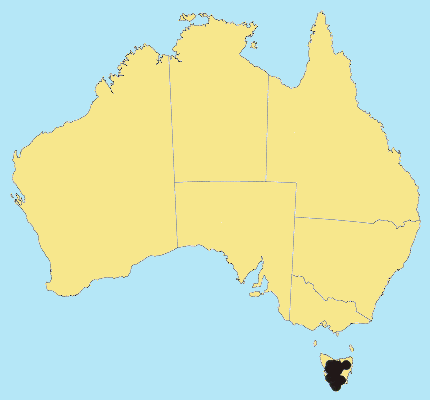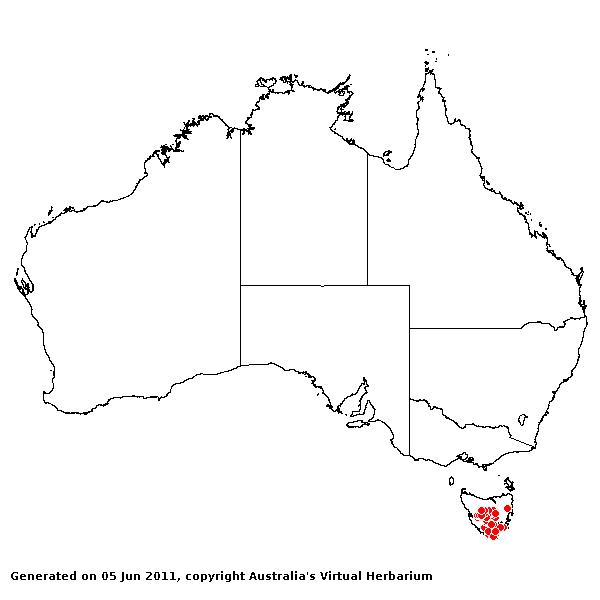Rytidosperma pauciflorum (R.Br.) H.E. Connor & E. Edgar. New Zealand J. Bot.
17: 332 (1979).
Classification. (GPWG 2001) : Subfamily
Danthonioideae. Tribe Danthonieae.
Basionym and/or
Replacement Name: Danthonia
pauciflora R. Br., Prodr. 177 (1810).
Type of Basionym or Protologue Information: Insulam Van Diemen, cujus regiones
Septentrionales et praecipue Australes visitair,.
Recent synonyms: Notodanthonia pauciflora, Danthonia pauciflora.
Key references
(books and floras): [1810]. R.Brown, Prodromus (177 as Danthonia
pauciflora), [1878] G.Bentham, Flora Australiensis 7 (596 as Danthonia
pauciflora), [2002] D.Sharp & B.K.Simon, AusGrass, Grasses of
Australia.
Illustrations:
[2005] K.Mallet (ed.), Flora of Australia 44B: Poaceae 3 (Fig.
12, A-D).
Habit. Perennial.
Culms erect, 5–15 cm tall, 2–3 -noded. Mid-culm nodes glabrous. Leaf-sheaths
glabrous on surface. Ligule a fringe of hairs. Leaf-blades filiform, involute,
2–7 cm long, 0.5–1 mm wide. Leaf-blade surface glabrous.
Inflorescence.
Inflorescence solid, a panicle. Panicle ovate, 1–2 cm long.
Spikelets.
Spikelets pedicelled. Fertile spikelets many flowered, with at least 2 fertile
florets (3–4), comprising 3–4 fertile floret(s), with diminished florets at the
apex, cuneate, laterally compressed, 4–7 mm long.
Glumes. Glumes
similar, thinner than fertile lemma. Lower glume elliptic, membranous, much
thinner on margins, without keels, 3–5 -nerved. Upper glume elliptic, 4–7 mm
long, membranous, without keels, 3–5 -nerved.
Florets.
Fertile lemma 1–3.5 mm long, without keel, 9 -nerved. Lemma surface indumented.
Lemma apex lobed, awned, 1 -awned. Median (principal) awn from a sinus, 4–7 mm
long overall, with a straight or slightly twisted column. Lateral lemma awns
absent. Lodicules present. Anthers 3. Grain 1 mm long.
Continental
Distribution: Australasia.
Australian
Distribution: Tasmania.
Tasmania:
Central Highlands, Ben Lomond, South West, Mt Wellington.
Notes.
R. pauciflorum is closely related to R. fortunae-hibernae by the
callus and rachilla structure, the shape of the lemmas and the colour of the
glumes. It is distinct from R. fortunae-hibernae by the glumes shorter
than 7 mm, and lemma lobe setae absent or shorter than the lobes; distinct from
R. dimidiatum by the well developed lemma hairs at least as tall as the
lobes. It is generally distinct by the small spikelets, and the inflorescence
which does not close up after anthesis.
Tasmanian
endemic, altitude 900–1400 m (rarely down to 450 m), grows up through cushion
plants, in moors, alpine bogs, and generally in wet sites. Flowers Jan. to Feb.





